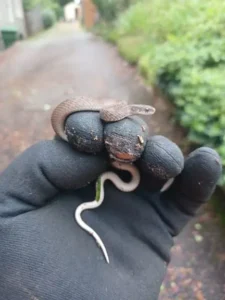By John Prevost and Chris Newman
What we know about the work of Fulton County Juvenile Court (FCJC) comes from the website www.fultonjuvenilecourt.org and from the 2021 annual report, published in 2022 and obtained after years of trying to contact the court. No previous reports were available at the website and the annual report sent to GPNA’s Public Safety Committee has not been posted at the website. The report provides information about court functions and work but, unfortunately, leaves out important details.
First, keep in mind that the court serves all of Fulton County. Crime is a concern, but this report makes clear the court’s vital role in addressing the welfare, safety, and social needs of children in Fulton County. Of the 2,670 total cases opened during 2021, the annual report describes a non-crime group (322) classified as Children In Need of Services (CHINS) – children requiring care, guidance, and counseling for “matters involving ungovernable children, truancy, curfew violations, possession of alcoholic beverages, and runaways.” Other non-crime related cases (347) were classified as Dependency (allegations of abandonment, neglect and/or abuse, educational neglect, and termination of parental rights). In another 107 cases, the court considered assuming guardianship of the child.
When the juvenile court is involved with family issues, it appoints a non-attorney professional or an education advocate to ensure the rights and best interests of youth are protected. During 2021, a total of 435 cases were assigned to guardians and 226 cases to education advocates. Thirty-eight of these cases were referred to mediation, a non-adversarial approach used whenever possible to resolve issues. Paying attention to the non-criminal activities of youth is important not only for their protection and safety, but also because not intervening frequently leads to more troubling behavior later.
Almost half the total cases filed with the court (1,272) during 2021 were for Delinquency (a crime of some type) and another 441 were for “traffic” (we assume this means a traffic violation). The “scooter boys” committed vehicle break-ins and other dangerous crimes during school hours and late at night. Why were these middle school aged boys out at night? What social and family situations led to their not being at home? Why did they have a gun? Were they already involved with the juvenile court? The juvenile court intake process includes in-depth assessments to gain a clear picture of each child’s personal, family, school, and mental health background. FCJC completed an average of twenty-two behavioral health screenings per month in 2021.
How the juvenile court responds to what is discovered during the intake process can have profound effects on whether the child moves away from or becomes more involved in crime. A comment (or perhaps a complaint) often heard is that youths who commit crime are right back on the street or released to the custody of their parents. Many affected or otherwise concerned citizens want to know: Why aren’t they locked up?! Part 3 of our juvenile court series discusses how many youths are involved in crime, how the court manages these cases, and how the court and APS work to keep children on the right track.
Note: The GPNA Public Safety Committee seeks to understand and educate itself and our neighbors on the various players in the criminal justice system to identify how we can advocate for the right resources and for system improvements. We advocate for openness in sharing information about agencies’ resources, operations, staffing, workload, and effectiveness. Previous articles reported on the courts, probation, and most recently, on Policing Alternatives and Diversion (PAD).
John Prevost is an instructor in the Department of Criminal Justice and Criminology at Georgia State University. Chris Newman is the Chair of the GPNA Public Safety Committee.





